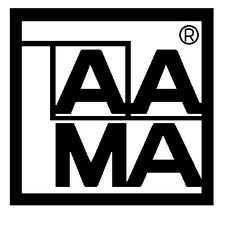AMA 611-12, "Voluntary Specification for Anodized Architectural Aluminum" has been published by the American Architectural Manufacturers Association (AAMA). AAMA 611-12 describes test procedures and requirements for high performance (Class I) and commercial (Class II) architectural quality aluminum oxide coatings applied to aluminum extrusions and panels for architectural products. The specification also covers anodized finishes produced in batch or continuous coil.
"Updated from the 1998 version, AAMA 611-12 includes clarification of visual inspection language regarding surface imperfections and addition of coating observation and angle inspection," says Andy Joswiak (Apogee Enterprises, Inc./Linetec), chair of the AAMA Anodic Finishes (AAMA 611) Task Group. "Also, the updated specification contains additions and clarifications of finishes to the applicable Aluminum Association Designation System for Aluminum Finishes for pretreatments and finishes."
AAMA 611-12 references important industry standards which include AAMA 609 and 610-09, "Cleaning and Maintenance Guide for Architecturally Finished Aluminum," AAMA 800-10, "Voluntary Specifications and Test Methods for Sealants" and ASTM B137-95 (2009), "Standard Test Method for Measurement of Coating Mass per Unit Area on Anodically Coated Aluminum."
AAMA 611-12, "Voluntary Specification for Anodized Architectural Aluminum" is available for AAMA members to download at a cost of $10. Non-members may purchase the document at a cost of $30 for download. The specification is also available for purchase on CD and hardcopy. To order AAMA 611-12, visit AAMA's Publication Store. BD+C
Related Stories
| Oct 6, 2011
GREENBUILD 2011: Growing green building market supports 661,000 green jobs in the U.S.
Green jobs are already an important part of the construction labor workforce, and signs are that they will become industry standard.
| Oct 6, 2011
GREENBUILD 2011: Dow Corning features new silicone weather barrier sealant
Modular Design Architecture >Dow Corning 758 sealant used in GreenZone modular high-performance medical facility.
| Oct 6, 2011
GREENBUILD 2011: NEXT Living EcoSuite showcased
Tridel teams up with Cisco and Control4 to unveil the future of green condo living in Canada.
| Oct 6, 2011
GREENBUILD 2011: Kingspan Insulated Panels spotlights first-of-its-kind Environmental Product Declaration
Updates to Path to NetZero.
| Oct 5, 2011
GREENBUILD 2011: Johnson Controls announces Panoptix, a new approach to building efficiency
Panoptix combines latest technology, new business model and industry-leading expertise to make building efficiency easier and more accessible to a broader market.
| Oct 5, 2011
GREENBUILD 2011: Software an architectural game changer
Interactive modeling software transforms the designbuild process.
| Oct 5, 2011
GREENBUILD 2011: Tile manufacturer attains third-party certification for waste recycling processes
Crossville has joined with TOTO to recycle that company’s pre-consumer fired sanitary ware.
| Oct 5, 2011
GREENBUILD 2011: Sustainable construction should stress durability as well as energy efficiency
There is now a call for making enhanced resilience of a building’s structure to natural and man-made disasters the first consideration of a green building.
| Oct 5, 2011
GREENBUILD 2011: Solar PV canopy system expanded for architectural market
Turnkey systems create an aesthetic architectural power plant.
| Oct 5, 2011
GREENBUILD 2011: Kohler builds sustainable booth at Greenbuild 2011
In a setting composed of reclaimed materials, biodegradable signage, energy-efficient lighting and more, exhibitor highlights its new products with ecological awareness.

















